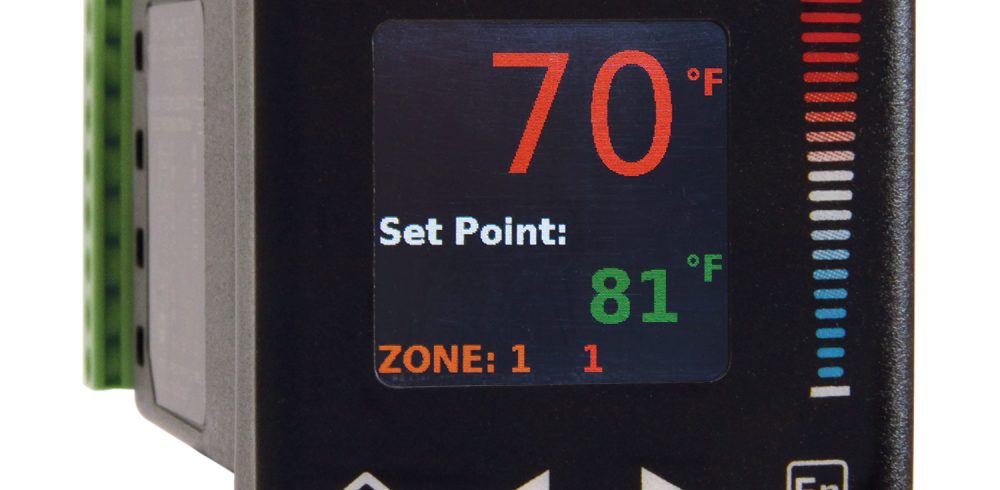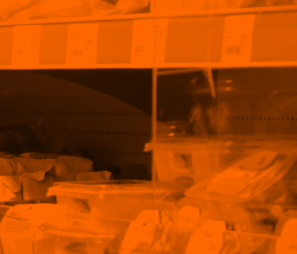Thermal processing is critical to the success and safety of food and beverage manufacturing. Yet often, thermal control is not up to scratch, causing inefficiency, loss of profit and detriment to products. In this article, David Sarhok, Account Manager Europe for food and beverage processing and equipment at industrial temperature controller manufacturer Watlow, unpacks how modern temperature controllers can overcome seven of the most common efficiency problems in food and beverage thermal processing. In 2022, Watlow acquired Eurotherm, which manufactures industrial temperature controllers, power controllers and data management systems used heavily in the food and beverage industry.
Temperature instability
Managing temperature control is critical in the manufacturing of food and beverage applications. For example, oil temperature in fryers can be difficult to control. With poor control, the temperature can oscillate from too hot to too cold, wasting time and energy in the process. Temperature variation can also lead to irreversible damage to the product creating waste and consequential loss of profit.
One solution is to use a precision proportional integral derivative (PID) controller. To control other setpoints at the same time, like humidity and pressure, this type of controller can typically be purchased with multiloop options and dedicated algorithms that aid the application. Autotune functions are available that will automatically set a range of parameters to optimise the process when enabled on specific equipment.
Product inconsistency
Poorly controlled processes can waste time and energy through non uniform mixing, cooking and cooling. One of the common problems arises from human intervention in the process where operators tweak the control manually, causing unnecessary and often negative changes to the product.
Automating the process is better at achieving consistent results. A modern PID control system ensures all zones in the oven are controlled to the right temperature for that product. Look for models with recipe functions that allow the whole setup to be saved and recalled when you need to manufacture the same product repeatedly.
Energy usage
According to the Food & Drink Federation, the UK’s food and drink industry is the nation’s largest manufacturing sector, generating a huge energy output as a result. Suppliers provide energy on a tariff and in poorly managed plants that draw more energy at certain times than the tariff allows, they can suffer from hefty fines.
The simple answer is better power control and modern thyristor controllers. These new smart devices are available with a large variety of industrial communications, which allows them to communicate with each other across the plant. Special algorithms for managing and spreading loads across the plant help make the best use of your energy and keep your finance managers happy by operating within your specified tariff.
Temperature overshoot
During cooking and cooling processes, whenever the temperature of a product overshoots or undershoots, energy is wasted. Some products can also be damaged by overheating or overcooling and then require a quality assessment.
When operating temperatures are outside the desired setpoint, this leads to wasted time and energy, under or over cooked products, as well as possible non-conformance to critical temperature limits leading to scrap product.
For processes where energy is being wasted in this way, one solution is to replace the simple temperature controller with a precisionPID temperature controller. Intelligent models have specific algorithms embedded in the control strategy that automatically take care of common heating and cooling problems. Useful features in this case are inbuilt algorithms that stop the temperature overshooting whilst heating up.
Compliance to critical temperature limits
In food and beverage processes that follow Good Manufacturing Practicing (GMP) and Hazard Analysis and Critical Control Points (HACCP) guidelines, you could be wasting energy simply by using standard controllers. The problem with these controllers is the wide variation in accuracy levels.
Investing in a precision PID controller with accurate inputs and outputs, and better rejection to noise, means manufacturers can be sure that the temperature you set is the temperature you get. It also ensures that manufacturers meet limits while getting ROI by reducing energy bills over the lifetime of the controller.
Packaging problems
Some types of packaging are difficult to bond together. The time, temperature and pressure are crucial to the heat-sealing process to ensure a quality seal that retains its integrity. Basic controllers are not up to this job, which can lead to wastage of time, product and packaging.
The temperature at the point of the seal needs to be accurate in combination with the mechanical pressure and time of contact. A precision PID controller, such as the PM PLUS™ from Watlow, along with the temperature controller, a Programmable Logic Controller (PLC) is used to provide precise control of the machine.
Boiler efficiency
The energy used to supply hot water and steam is one of the biggest costs in food and beverage manufacturing. As the UK moves towards carbon-free energy generation, some manufacturers have already made the decision to move to electrically heated boilers to reduce their carbon footprint. Used in combination with modern power controllers that provide firing modes to suit different types of heaters and algorithms to better manage boiler loads, they are ideal for companies who are committed to green initiatives and directives like Energy Savings Opportunity Schemes (ESOS).
In the manufacturing of food and drink products, temperature control is the fundamental process that holds the key to the functioning of the industry. Inconsistency in temperature can be detrimental to products and the manufacturer. Modern power controllers offer greater control and reliability needed to ensure accurate and safe products.
To discover Watlow’s range of power controllers, visit the website.
Manufacturing & Engineering Magazine | The Home of Manufacturing Industry News















